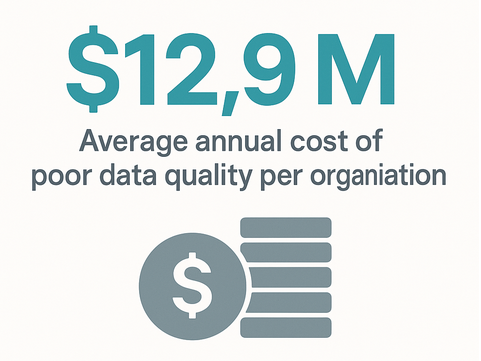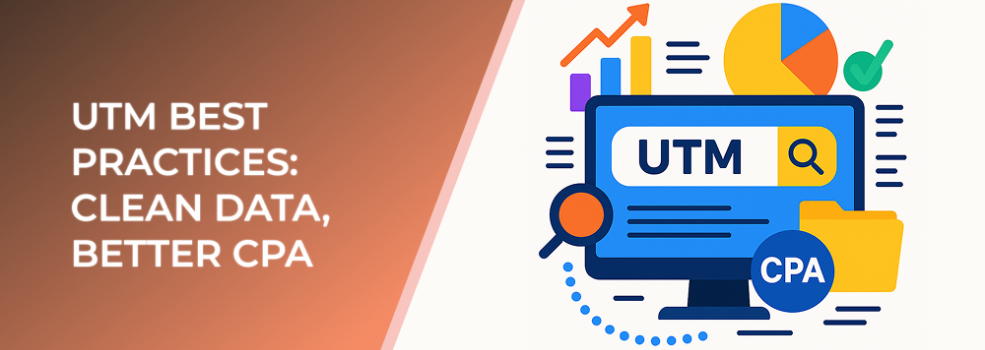Accurate tracking is one of the most underrated drivers of paid campaign performance. When UTMs are inconsistent or poorly structured, analytics platforms misattribute conversions, inflate costs, and make optimization decisions unreliable. Clean UTM parameters help marketing teams understand exactly which creatives, channels, and audiences deliver the strongest results.
Why UTMs Matter for CPA

Approximately 21% of media spend is wasted when data quality is poor
Cost per acquisition (CPA) is only as accurate as the data behind it. Studies show that about 26% of marketing data is misattributed when tracking parameters are inconsistent. Another report found that marketers lose an estimated 21% of their budget due to poor data quality. Clean UTMs significantly reduce attribution errors, making budget allocation more efficient and lowering true CPA.
Core UTM Elements to Standardize
A clear and unified naming approach is essential. The basic UTM parameters include:
-
utm_source – identifies the platform or channel
-
utm_medium – shows the traffic category (cpc, email, referral)
-
utm_campaign – provides the campaign name
-
utm_term – captures keyword or audience detail
-
utm_content – differentiates between ad variations
To avoid data fragmentation, every campaign should follow the same naming framework across all platforms.
Best Practices for Clean UTMs
1. Use lowercase for everything
Analytics tools treat uppercase and lowercase as different values. This can split traffic into separate buckets. Lowercase-only rules prevent this.
2. Keep naming structures consistent
A universal naming convention across teams ensures clean reporting. A common structure looks like:
source/medium-campaign_audience-creative
3. Avoid spaces and special characters
Spaces often translate into unexpected symbols in analytics. Underscores or hyphens keep data clean and readable.
4. Include audience or targeting info in UTMs
Audience-level tracking helps identify which segments have the lowest CPA. For example, campaigns with refined audience segmentation often see up to 30% better CPA performance.
5. Use UTM templates for all team members
A template or generator prevents mistakes and maintains standardization as campaigns scale.
Common UTM Mistakes That Inflate CPA
-
Using different spellings for the same source (e.g., "Facebook" vs "facebook")
-
Forgetting parameters or adding them in the wrong order
-
Creating overly long UTMs with unnecessary descriptors
-
Not updating UTMs during A/B tests

On average, organisations lose about US $12.9 million each year due to poor quality data
Poor UTM hygiene leads to misattribution, which skews CPA calculations. This often makes underperforming campaigns appear stronger than they are, and high-performing segments get buried.
How Clean UTMs Improve Optimization
Accurate UTMs allow deeper insight into:
-
Top-performing audiences
-
High-ROI placements
-
Winning creative angles
-
Seasonal trends
-
Click-to-conversion behavior
With cleaner attribution, marketers redirect spend toward high-value segments faster. Companies that prioritize data hygiene report up to 25% lower CPA within the first 90 days of implementing standardized UTMs.
Creating a Standardized UTM Framework
A scalable framework includes:
-
Strict naming rules
-
A simple approval workflow
-
Templates for every channel
-
Testing to confirm all UTMs fire correctly
Even small teams benefit from building this system early. It reduces operational errors and boosts long-term campaign reliability.

